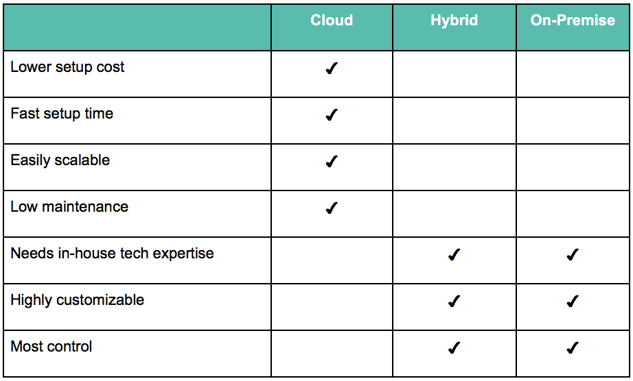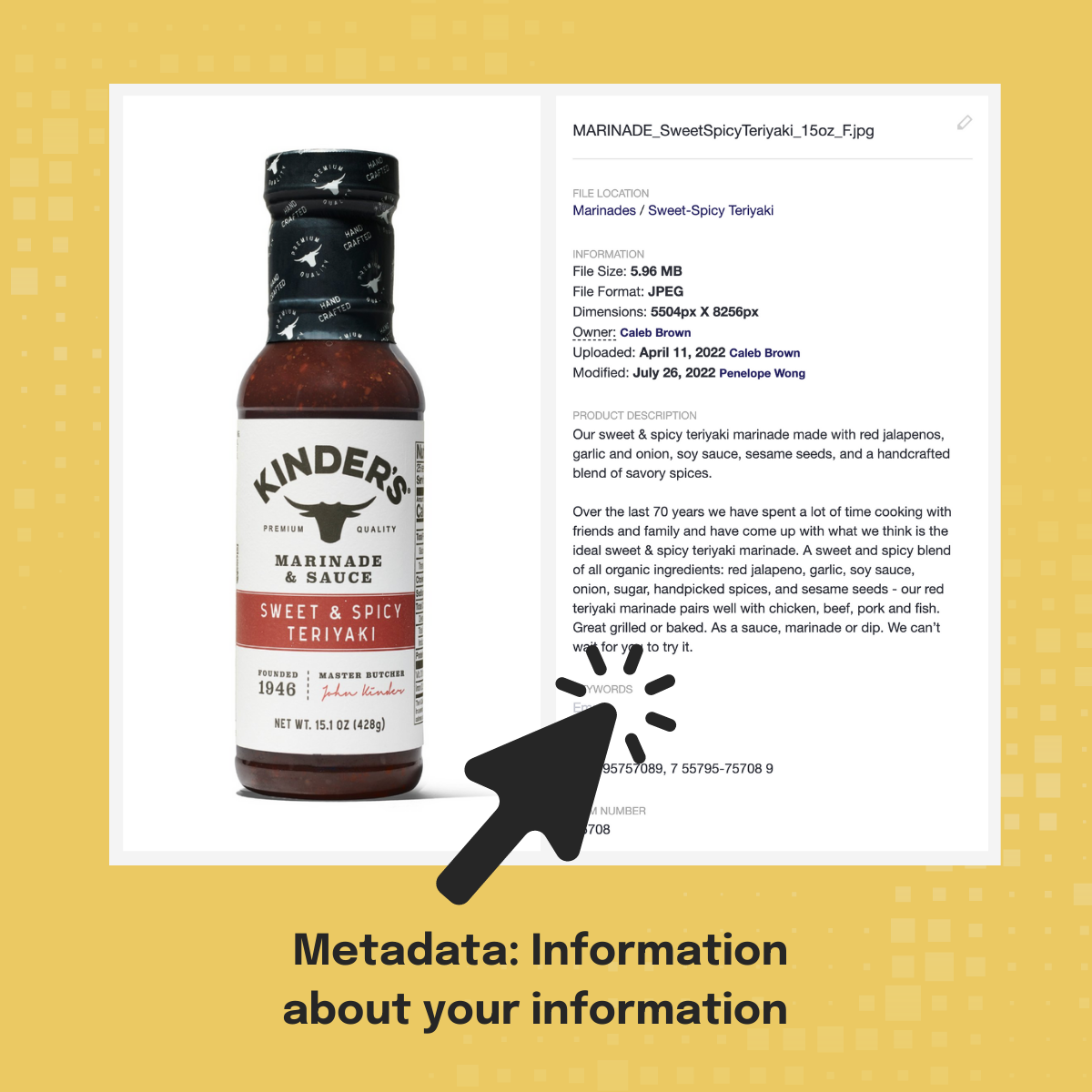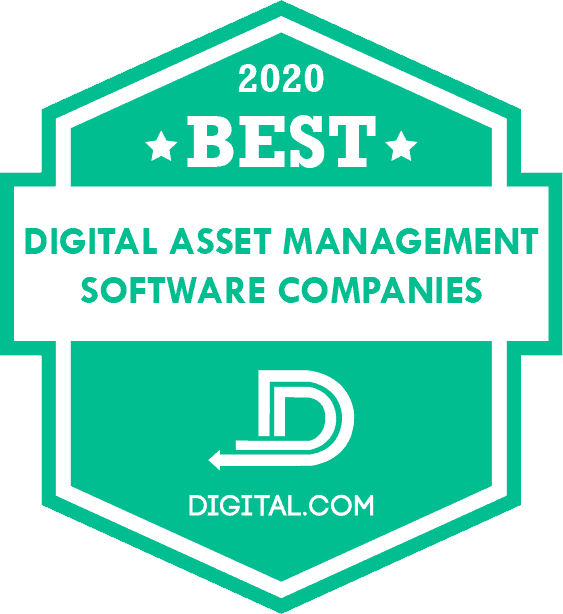Choosing a Digital Asset Management System: SaaS, Hybrid, or Hosted?


After answering the question “do we need a digital asset management system?” the next question you’ll likely encounter is “what kind of digital asset management system?” Answering that question will depend on the needs of your team such as the number of users, types of assets, languages, special metadata needs, distribution channels, and other considerations such as available financial and personnel resources.
An early decision to make is what kind of software delivery model makes the most sense. There are three main types (plus open source or building your own from scratch) to consider. They are Software as a Service (SaaS) / Cloud-based, On-Premise, and a Hybrid of Cloud and On-Premise. This post describes the different types and the pros and cons of each.
Software as a Service (SaaS) / Cloud-based
Before about ten years ago there were few cloud-based options for any type of software. Companies like Salesforce led the way in developing cloud-based options and coining the term Software as a Service (SaaS). Today, cloud-based software is the most popular for most types of business software.
There are important reasons for that. The availability of infrastructure options means that vendors can quickly build upon an existing cloud infrastructure, such as Amazon Web Services, and get to market with a stable, scalable software offering. Customers also receive huge benefits from cloud-based options. They can access and be up and running in no time. There is no need to download software or modifying a server system to be able to run the product. That means IT doesn’t have to be involved to manage and the company does not have to purchase special equipment.
Typically SaaS options are sold through a subscription model, either monthly, annually, or for some number of years.
Pros:
Lower setup cost
Fast setup time
Easily scalable
Low maintenance
Cons:
Less customizable
Less control over physical security (something that is not an issue for most organizations as many cloud hosting providers, such as Amazon AWS have highly advanced physical security)
On-Premise
A decade ago almost all DAM implementations were hosted on-premise, which means that the software is housed on a local server that is maintained by IT or by a consultant. Because the servers are on the same network as many users, the speed might be faster than for cloud options, especially with larger files. This option still remains popular for enterprise, museums, and organizations with special requirements, such as unique security requirements. For example, some organizations may have requirements to only store company data in certain locations, and accessing data through a server located in a different country would be a violation.
Depending on the vendor, a hosted solution may be a one-time fee or an annual or multiyear subscription fee. Important costs to consider with hosted on-premise solutions are the maintenance costs in terms of hardware and personnel.
Pros:
Most customizable
More control
Faster speed internally (potentially)
Cons:
More expensive
Longer to implement
More maintenance
Requires in-house expertise
Infrastructure requirements
Hybrid
A hybrid solution combines aspects of an on-premise and cloud system. Like, on-premise solutions, a hybrid solution is most popular for enterprise, museums, and other organizations with unique requirements. In terms of pros and cons, hybrid solutions share much more in common with hosted or on-premise options than being a true blend of cloud and on-premise. They offer accessibility benefits but they are likely to be as expensive (or sometimes more) as hosted solutions.
Here’s a breakdown of the general benefits of the three main types of systems.

One size does not fit all and it is important to review your needs and your available resources before committing to a particular type of digital asset management system. Once you’ve made a decision on the general type of system you can look into specific feature offerings, pricing, and other considerations to help you find the right fit for your team.
Here’s a guide to help you evaluate various vendors and narrow your selection to the right ones for your team.



